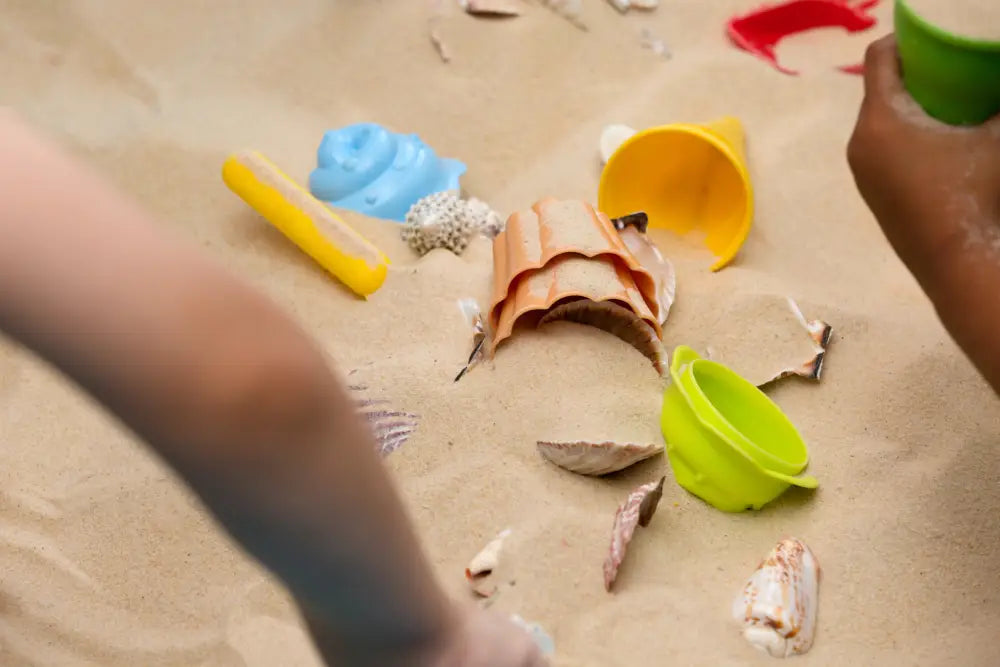
10 Outdoor Summer Sensory Activities for Autism to Boost Playtime
Share
🌿 As spring blooms and summer heats up, the outdoors becomes a natural playground for children with sensory needs. For kids with autism, ADHD, or sensory processing disorder, outdoor sensory play supports regulation, attention, and confidence. The best part? You don’t need expensive equipment—just a few creative ideas, some sensory toys, and time outside.
Here are 10 engaging outdoor sensory activities that encourage movement, curiosity, and calm—all while using tactile toys and natural elements.
1. Nature Texture Scavenger Hunt
Head outside and explore textures like rough bark, fuzzy moss, smooth stones, and crunchy leaves. Invite your child to find and feel different surfaces, then describe how each one feels. Comparing these textures to familiar tactile toys builds awareness and vocabulary. You can even make a simple texture checklist to turn this into a game.
2. Mud Kitchen or Sand Sensory Table
Fill a bin or large tub with sand, soil, or water. Add scoops, measuring cups, old utensils, and safe containers. Encourage your child to pour, stir, and dig freely. This type of messy play builds hand strength, supports fine motor skills, and promotes calm focus. Add herbs or drops of essential oil to layer in gentle scent-based sensory input.

3. Water Bead Balloon Toss
Hydrate water beads and gently place them inside balloons. Tie them off and play a tossing game on the grass or deck. The soft squish and gentle click of the beads offer rich tactile input. Holding, catching, and squeezing the balloons supports hand-eye coordination and pressure regulation. Always supervise this activity, especially with young kids.
4. Balance Path with Natural Obstacles
Use logs, flat stones, or a line of sticks to create a balance trail. Invite your child to walk slowly across the path, trying not to step off. This builds body awareness and strengthens core muscles. For added fun, change the path’s direction or spacing to keep the challenge fresh and adaptable.

5. Spray Bottle Art on Fences or Sidewalks
Fill spray bottles with water and a few drops of food coloring. Let your child spray designs onto cardboard, fences, or sidewalk pavers. This activity strengthens hand muscles and grip while offering visual stimulation and cooling water play. It’s especially helpful for children who enjoy repetitive motion or need to burn off extra energy.
6. Bubble Chasing with Weighted Toys
Blow bubbles into an open space and let your child chase and pop them while holding a small weighted toy or sensory beanbag. This combines gross motor movement with deep pressure input, helping kids regulate their energy and attention. The visual tracking of moving bubbles also supports focus and spatial awareness.

7. Frozen Tactile Treasures
Freeze small plastic toys, buttons, or beads inside ice cube trays. Give your child a tray of frozen blocks along with warm water droppers, small spoons, or tools to "rescue" the frozen objects. The cold temperature offers sensory contrast, while the activity encourages patience, fine motor control, and cause-and-effect understanding.
8. Outdoor Fidget Toy Station
Set up a picnic blanket with a tray or basket of sensory toys designed for outdoor use. Include pop tubes, fidget rollers, tactile balls, or textured discs. This creates a calm-down space in the middle of an active day. Let kids explore at their own pace and use tools that help them regulate without feeling overwhelmed.

9. Wind Sensory Play
Hang streamers, pinwheels, or ribbons from branches, play structures, or patio railings. Let your child watch how the wind moves each object, then encourage them to feel the breeze on their face or blow the streamers gently. This gentle play supports auditory and visual processing in a quiet and calming way.
10. Scented Garden Sensory Walk
Walk through a garden, nursery, or backyard and find herbs or flowers like mint, lavender, or rosemary. Show your child how to gently rub the leaves and smell the scent left behind. This introduces olfactory sensory input in a low-pressure way. Consider labeling the plants or turning the walk into a themed scent scavenger hunt.
Outdoor sensory play helps children regulate their emotions, explore the world with confidence, and practice essential physical and social skills. Whether you’re setting up a simple sand bin or hanging streamers in a tree, each experience offers rich, hands-on benefits. Use what you have, follow your child’s lead, and bring a few favorite sensory toys outdoors to enhance the fun.
